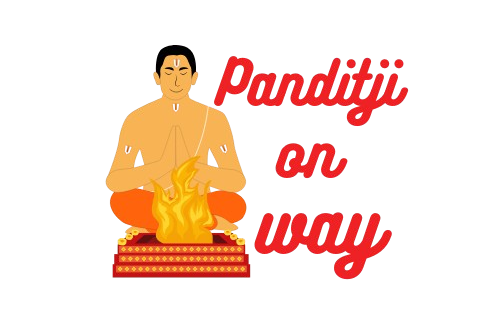Annaprashan Puja | Pandit For Annaprashan Puja
$39.48
Book Annaprashan Puja for Baby’s First Rice Ceremony | Vedic Rituals by Expert Pandits
Celebrate your baby’s sacred first solid food ritual with our all-inclusive Annaprashan Puja service, conducted by certified Vedic Pandits. Performed as per birth chart (Rashi & Nakshatra), this ceremony ensures divine blessings for your child’s health, growth, and prosperity. Available at home, temple, or venue with puja samagri included. Book now for an authentic Hindu rice feeding ceremony.
Description
Annaprashan Puja | Pandit For Annaprashan Puja
Annaprashan Puja, also known as Annaprasana or Mukhe Bhaat, is a significant milestone in Hindu tradition that marks a child’s first intake of solid food. Performed with devotion and in accordance with Vedic traditions, the Annaprashan ceremony typically occurs when a baby is between 6 to 8 months old. This auspicious ritual involves feeding the child Sweet Rice (Kheer) or Milk Rice as a symbol of initiating them into the world of solid food, guided by blessings for health, intelligence, and prosperity. It symbolizes the beginning of a journey toward health, nutrition, and overall growth. By performing the Annaprashan Puja, families seek divine blessings for their baby’s long life, wisdom, strength, and prosperity.
At PanditJi On Way, we are proud to offer authentic, Vedic, and personalized Annaprashan Puja services conducted by certified and experienced priests who ensure each ritual is carried out with devotion and sanctity.
Significance of Annaprashan Puja Ceremony
The word Annaprashan is derived from Sanskrit — ‘Anna’ meaning food and ‘Prashan’ meaning to consume. This puja is performed to mark the baby’s first step into the world of solid foods, usually beginning with Sweet Rice (Kheer) or Milk Rice, which is symbolic of purity, nourishment, and divine blessings.
Why Annaprashan is Performed:
- Introduction to Nourishment: This is the baby’s first taste of solid food, marking a crucial developmental phase.
- Blessings for a Healthy Life: Through Vedic mantras and offerings, the child is blessed for good digestion, health, and strength.
- Astrological Alignment: The ceremony is aligned with the baby’s Janma Nakshatra (birth star) to ensure positive cosmic influence.
- Spiritual Growth: It symbolizes the beginning of the child’s connection to community, family traditions, and culture.
Why Choose Our Annaprashan Puja Services?
At PanditJi On Way, we understand the spiritual and emotional significance of this cherished tradition. We provide personalized and professional Annaprashan Puja services that are conducted by certified and experienced Vedic Pandits.
Our Services Include:
-
Astrologically Accurate Muhurat Selection
Based on your baby’s Rashi and Nakshatra, we select the most auspicious time for the ceremony to enhance spiritual benefits. -
All-Inclusive Puja Samagri
We provide high-quality, complete puja materials to ensure a smooth, authentic experience. -
Flexible Ceremony Locations
Whether you prefer the ceremony at home, in a temple, or at a banquet hall, we make arrangements according to your comfort. -
Customizable Packages
We offer flexible timing and package options to suit your schedule and budget. -
Certified Vedic Pandits
Our priests are well-versed in Sanskrit, Vedas, and Puranas, and are trained to perform every step with purity and devotion.
What Happens During the Annaprashan Puja?
The puja typically involves the following rituals:
- Sankalpa: A vow is taken by the family to perform the ceremony with devotion.
- Ganapati Puja: Invoking Lord Ganesha to remove obstacles.
- Kalash Sthapana: Establishing the sacred pot symbolizing purity.
- Navagraha Puja: Worshipping the nine planets for cosmic harmony.
- Havan: Sacred fire ceremony with Vedic chants for purification.
- Feeding Ceremony: The child is fed with sweet rice or milk rice by elders.
- Ashirwad (Blessings): Family and guests bless the baby for health and prosperity.
Benefits of Annaprashan Puja
- Boosts Spiritual Protection
- Promotes Digestive Strength
- Connects the Baby with Family Traditions
- Invokes Positivity and Prosperity
- Guides the Child’s Life with Divine Energy
According to The Hindu Portal, Annaprashan is among the 16 samskaras in Hinduism and is vital for the child’s well-being and spiritual foundation.
When is the Best Time for Annaprashan?
- Boys: Typically in the 6th or 8th month.
- Girls: Typically in the 5th or 7th month.
The muhurat is chosen based on Rashi (zodiac) and Nakshatra (constellation) to align the ceremony with the child’s astrological strengths.
Annaprashan Puja Samagri and Ritual Preparation Guide
Planning an Annaprashan Puja? At PanditJi On Way, we provide complete support, including all essential puja samagri and expert Vedic guidance. Our goal is to ensure a seamless, sacred, and memorable rice feeding ceremony for your child.
Annaprashan Puja Samagri Provided by Us
We supply all required Vedic Annaprashan Puja materials, eliminating the stress of sourcing ritual items. Our high-quality samagri includes:
-
Haldi (Turmeric) – For purification and sanctity
-
Abeer and Gulal – Traditional colors used for celebration
-
Mango Leaves and Tulasi – Essential for spiritual cleansing
-
Darba (Sacred Grass) – Integral to all Vedic rituals
-
Kalash (Holy Water Pot) – Symbol of divine presence
-
Betel Leaves and Betel Nuts – Used in traditional offerings
-
Havan Sticks and Samidha – Required for the sacred fire ritual
-
Havan Kund – Copper vessel used for Havan
-
Dravyas – Sacred offerings including herbs and grains
-
Ghee – Used in fire offerings for spiritual purification
-
New Cloth (Kapda) – For ritual decoration and offerings
These items are selected to align with authentic Hindu puja practices for Annaprashan ceremonies.
Items to be Arranged by the Yajaman (Host)
To ensure the smooth execution of the ritual at your location, we request you to arrange the following common household items:
-
Clean metal or copper vessels
-
Traditional oil lamps (diyas)
-
Floor mats and seating cushions
-
Plates and bowls for offerings
-
A small wooden or metal chowki for the puja setup
-
Prasad (sweet offerings) for distribution
-
Framed or printed photos of deities for worship
A detailed checklist will be provided after booking confirmation to help you prepare without any last-minute confusion.
Key Features of Our Services
-
Puja materials can be provided by us upon request
-
Muhurat selection is based on the baby’s Rashi and Nakshatra
-
Ceremony can be performed at your home, temple, or any preferred venue
-
Flexible scheduling to suit your availability
-
All rituals are performed in strict accordance with Vedic scriptures
-
Our priests are certified, experienced, and fluent in Sanskrit rituals
-
Includes complete ritual procedures such as Sankalpa, Jaap, Havan, and Daan
-
End-to-end ritual coordination and support for a stress-free experience
Book Annaprashan Puja with PanditJi On Way
At PanditJi On Way, we take care of every detail to ensure your baby’s Annaprashan Puja is meaningful, pure, and stress-free. Our services are designed to uphold ancient traditions while offering modern-day convenience.
👉 Book Now: https://www.panditjionway.com
Frequently Asked Questions (FAQs) About Annaprashan Puja Ceremony
1. What is Annaprashan Puja and why is it important in Hindu tradition?
Annaprashan Puja, also known as the First Rice Feeding Ceremony, is a significant Hindu ritual where a baby is given solid food for the first time. It marks the baby’s transition from a milk-only diet to solid food and is performed with Vedic mantras for the child’s health, prosperity, and longevity.
2. When should I perform the Annaprashan Ceremony for my baby?
Answer: The best time to perform Annaprashan Puja for babies is between the 6th and 8th month for boys, and 5th to 7th month for girls. The exact auspicious muhurat is determined based on the baby’s birth star (Janma Nakshatra) and astrological chart.
3. What are the benefits of performing the Annaprashan Ceremony?
Answer: Performing Annaprashan Puja as per Vedic rituals offers spiritual blessings for the baby’s well-being. The ceremony invokes divine energy for the child’s healthy growth, strong digestion, good fortune, and mental development, laying the foundation for a prosperous life.
4. Can Annaprashan Puja be done at home with a Pandit?
Answer: Yes, you can conveniently perform the Annaprashan Ceremony at home with a qualified Pandit. At PanditJi On Way, we provide complete home-based Annaprashan services with puja samagri, havan kund, and muhurta consultation included.
5. What food is used in the Annaprashan ritual for babies?
Answer: Traditionally, Sweet Rice (Kheer) or Rice mixed with Milk and Ghee is used during the ceremony. This sacred first meal is offered by the parents or grandparents as part of the Annaprashan feeding ritual.
6. How long does the Annaprashan Puja ceremony take?
Answer: A well-conducted Annaprashan Puja by expert Pandits typically lasts between 60 to 90 minutes. The time includes important rituals like Sankalpa, Ganesh Puja, Navagraha Puja, Havan, and the Feeding Ceremony.
7. What items are required for a complete Annaprashan Puja?
Answer: We provide all essential Annaprashan Puja items, including:
- Puja Samagri (rice, ghee, sweets)
- Flowers and fruits
- Havan kund and firewood
- Decorative items for the baby
- Holy water and utensils
This ensures you don’t have to worry about buying anything separately.
8. What should the baby wear for the Annaprashan Ceremony?
Answer: For this sacred occasion, the baby traditionally wears new clothes such as a kurta-pajama, dhoti, or lehenga, depending on gender and family tradition. Dress the baby in comfortable ethnic attire to honor the spiritual significance of the ritual.
9. Can Annaprashan Puja be combined with other baby ceremonies?
Answer: Yes, many families choose to combine Annaprashan with Naming Ceremony (Namkaran) or Mundan (Hair Tonsure) to celebrate multiple milestones. Our team can help you plan a combined Vedic ceremony tailored to your needs.
10. Is it necessary to consult a priest for Annaprashan?
Answer: Absolutely. A certified priest ensures the ceremony follows Vedic protocols, making it spiritually effective and auspicious.
11. Can both parents feed the child during Annaprashan?
Answer: Yes, although traditionally a maternal uncle or elder family member performs the first feeding, both parents can participate as per personal preference.
12. What if I miss the 6th or 7th month for my baby?
Answer: While the 6th to 7th month is ideal, the puja can still be performed later with proper muhurat selection by an astrologer or priest.
13. How can I book an Annaprashan Puja with a certified Pandit online?
Answer: Booking your Annaprashan Puja online is simple. Visit PanditJi On Way – Annaprashan Puja Booking and select your preferred location, date, and package. Our team will arrange an experienced Vedic Pandit, muhurat, and all puja materials for a stress-free experience.
Conclusion
The Annaprashan Puja Ceremony is a sacred and joyful occasion that celebrates your baby’s growth, development, and spiritual initiation. With divine blessings, powerful mantras, and traditional rituals, this ceremony sets the stage for a life filled with health, wisdom, and happiness.
Choose PanditJi On Way to make this beautiful transition a spiritually enriching experience for your little one. With expert guidance, authentic materials, and flexible scheduling, we help you honor tradition with ease and grace.
✅ Book Your Annaprashan Puja Now
Additional information
| Package | Economy : (1 Panditji and Puja Samagries) |
|---|







Reviews
There are no reviews yet.